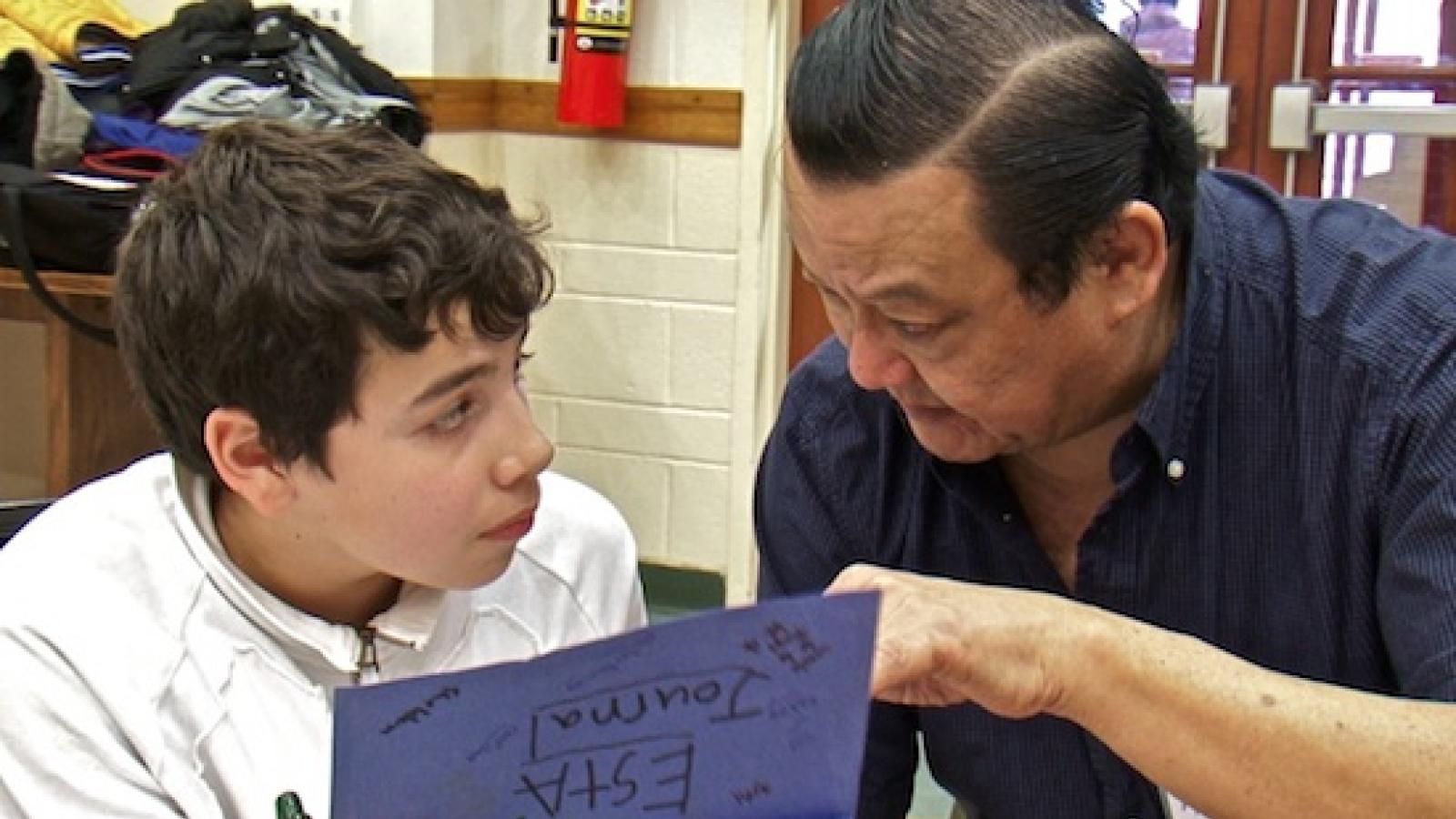"There is an outward projection of the self into the arts so it feels safe for both generations to explore ideas that may be more taboo or difficult.”— Jennie Smith
Growing older doesn’t have to limit our opportunities to be engaged in the arts. In fact,
Elders Share the Arts (ESTA)—founded in 1979 by Susan Perlstein in New York City’s South Bronx neighborhood—works to give older citizens a means by which to share their stories through visual arts, creative writing, and theater. Throughout New York City, ESTA runs a number of artistic programs for elders that provide opportunities for social engagement and connect the elders to their communities.
One of ESTA’s main goals is to encourage communication between the young and the old, and they do this through their History Alive! program. According to Jennie Smith, executive director of Elders Share the Arts, History Alive! was started, “to bring the generations together, to have a dialogue about what their commonalities are and what their differences are.” The project aims to “break down the stereotypes of aging and show that older adults can really be an asset to the community and to younger people within them as well,” said Smith.
History Alive! starts with a partnership between a local school and senior citizen community. Over the course of ten to twenty weeks, ESTA brings in an arts educator to work with the elders and the youth around a topic that comes from the group or from the curriculum the students are learning in school. The educator first works with each generation separately to explore the biases they have toward each other before bringing the groups together to explore their similarities and differences. The themes of the projects created in History Alive! range from civic engagement to the Bill of Rights. Together, the youth and the elders learn oral history and art skills using theater arts, visual arts, storytelling, and writing to express their creativity. Smith explained that these art forms “give both [generations] a container to create [and] allows both of these groups, who are so disempowered often, a chance to reclaim that power.” She added, “They’re all art forms in which you can move outside of yourself and talk about things that maybe are not easy to express through a dialogue. There is an outward projection of the self into the arts so it feels safe for both generations to explore ideas that may be more taboo or difficult.”
Many of the participating students are English as a Second Language learners and first-generation immigrants. History Alive! helps them to learn presentation skills and also improve their English. The young people also learn to view the elders as members of their community who matter and who have something to contribute. The elders, on the other hand, gain an opportunity to share their life stories with another generation and to build a community not only with the participating students but with other elders in their area. Smith feels that History Alive! “really gives the elders a chance to have a platform for their voice and to pass on their legacy to the next generation.”
Smith noted that the community at large also benefits from History Alive! Not only do the partnerships created between schools and senior centers allow the institutions to share resources and expand their programs for each generation, but the elders begin volunteering more in the community, and the youth become more engaged and involved with elder issues. Ultimately, thanks to the dialogue fostered by History Alive! each generation lets go of its stereotypes of the other, allowing a real bond to be formed.

